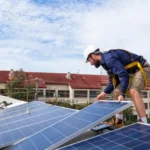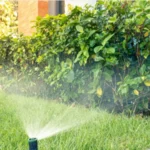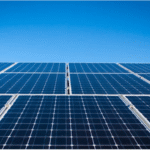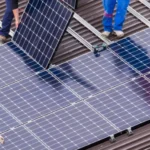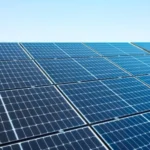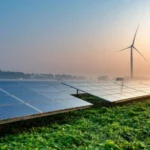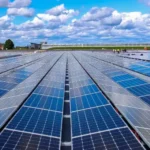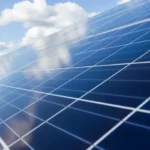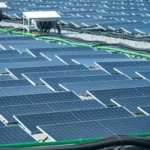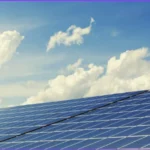Thinking of going solar but hesitant about the price tag of brand-new systems? You’re not alone. Whether you’re a homeowner planning an upgrade, a small business watching every dollar, or a DIY enthusiast building an off-grid setup, used solar panels offer a budget-friendly alternative.
But are they reliable or just risky? Can you connect them to the grid? And what do you save over the long term?
This blog covers everything you need to know, from buying tips to real-world performance, so that you can make an informed decision about solar panels.

Why People Choose Used Solar Panels
Used panels appeal to a growing group of eco-conscious buyers and DIY solar enthusiasts because they offer a unique mix of affordability and environmental responsibility.
Rather than going into a landfill, second-hand panels can be reused for years in new systems. For those on a tight budget or working on projects like tiny homes, off-grid cabins, or solar-powered sheds, they’re often the smartest choice.
Who Typically Buys Used Panels?
- Homeowners experimenting with off-grid setups
- RV and van-lifers needing mobile energy sources
- Small business owners seeking partial solar solutions
- Environmentally conscious individuals reusing rather than buying new
What Are Used Solar?
Used solar are previously installed photovoltaic (PV) modules that have been removed, often from commercial solar farms, old residential systems, or refurbished inventory.
They usually fall into one of three categories:
- Functional panels in good condition – No significant damage, still producing power
- Minor damage panels – May have frame dings or cosmetic wear
- Salvage panels – Low output or partially functioning, often for experimental use
These panels are commonly 10–20 years old and can still operate at 70% to 90% of their original rated output.
Real-World Performance Insights
A solar technician in Vermont shared his experience retrofitting a family barn with used solar energy inverter:
“I bought thirty used 250-watt panels from a decommissioned solar farm. Cost me $1,800 for over 7.5kW of capacity. After testing, most were producing around 85% of their rated power. I clean them twice a year, and they’ve held up well over three seasons.”
This is a perfect example of how older panels can still deliver impressive performance if you verify their condition and maintain them well.
Pros and Cons of Buying Used Panels
Before diving into the second-hand solar market, it’s essential to weigh the benefits and the trade-offs carefully.
Used solar panels can offer significant savings, but they also come with risks. Understanding both sides can help you avoid mistakes and get the most from your investment.
Pros
- Cost Savings: Typically 60–90% cheaper than new panels
- Sustainability: Helps reduce e-waste and supports recycling
- Great for DIY Projects: Lower risk if the system isn’t grid-tied
- Easier Entry Point: Allows more people to explore solar
Cons
- No Manufacturer Warranty: Once resold, warranties are usually void
- Reduced Efficiency: Output can drop 10–30% depending on age and condition
- Potential Hidden Damage: Microcracks and cell issues may not be visible
- Regulatory Challenges: May not meet updated electrical codes

Key Buying Considerations for Used Solar
If you’re seriously considering used solar panels, a careful inspection is crucial. Here’s what you should check before you buy.
You’ll also want to be sure your system components, such as inverters and batteries, are compatible with the panel’s voltage and capacity.
1. Electrical Testing
Use a multimeter to check the open-circuit voltage (Voc) and short-circuit current (Isc) of each panel. These should be within 10–15% of the panel’s label specs.
2. Physical Inspection
Look for cracked glass, corrosion, broken junction boxes, or delamination. Even small defects can lead to hot spots and rapid degradation over time.
3. Label Verification
Avoid unlabeled panels. A proper label should show:
- Manufacturer
- Model number
- Wattage and voltage ratings
- Certifications (e.g., UL, IEC)
4. Local Code Compliance
Some jurisdictions do not allow used panels for grid-tied systems. Always consult your local building authority or a licensed installer before purchasing.
Can You Connect Used Panels to the Grid?
Yes, used panels can be grid-tied provided they meet safety certifications and system codes.
However, there are some important caveats:
- Certification matters: Utilities may require UL-listed panels with proof of safety.
- Wiring requirements: Mismatched or degraded wiring could lead to code violations.
- Inspection approval: Your system will still need to pass inspection before interconnection.
In general, grid-tied systems with used panels are riskier and less common. They’re most popular in off-grid applications, where code restrictions are looser.
Matching Used Panels with Inverters
Inverter compatibility is often one of the biggest challenges when working with older solar panels.
Many used panels have non-standard voltage ranges or output characteristics that can confuse or overload modern inverters.
Tips for Compatibility
- Use a string inverter with a wide MPPT voltage range
- Avoid mixing different brands or wattages unless you’re using optimizers
- For microinverters, ensure voltage and power ratings align
One client who installed mismatched used panels from multiple manufacturers ran into frequent inverter shutdowns. The issue was resolved only after grouping panels by output type and adding optimizers for better current balance.

Can Used Panels Work with Solar Batteries?
Absolutely—but system design is key.
If your goal is to store energy for off-grid use, used panels can charge batteries effectively. However, you need to size the system appropriately.
Ensure the Following:
- Voltage matches your charge controller and battery setup
- Output is high enough to charge batteries, especially in winter reliably
- Batteries are not overcharged or undercharged due to inconsistent panel output
A quality MPPT charge controller will help regulate input and protect your battery bank.
Cleaning and Maintenance Tips for Used Panels
Used solar panels effeciency often carry years of dirt, hard water stains, or surface oxidation. Cleaning them properly is essential for performance.
Neglecting panel maintenance can lead to output loss of 10–20%, particularly in dry or dusty climates.
Best Practices
- Use a soft brush with distilled water and mild soap
- Avoid high-pressure washers or abrasive pads
- Clean at least twice per year—more in pollen-heavy or coastal areas
Where to Buy Used Panels
Here are some trusted options for sourcing second-hand solar panels:
- eBay or Facebook Marketplace – always request photos and voltage tests
- SanTan Solar and Solar Cowboyz – reputable sellers of refurbished panels
- Decommissioned commercial arrays – bulk quantities available at a discount
- Local installers – often remove working panels from client homes
Wherever you buy, ask for proof of electrical testing and confirm any return or short-term warranty options.
Used vs. New Solar Panels: A Side-by-Side Look
| Feature | Used Solar | New Solar Panels |
|---|---|---|
| Cost per watt | $0.30–$0.60 | $2.50–$3.50 |
| Warranty | Typically none | 10–25 years |
| Efficiency | 70–90% of rated output | Near 100% of rated output |
| Certification | May vary or be missing | Fully certified |
| Best use case | Off-grid, DIY, budget builds | Grid-tied residential systems |
Final Thoughts: Are Solar Panels Right for You?
Used solar panels offer a smart, sustainable, and affordable option—but they’re not for everyone.
If you’re building an off-grid system, experimenting with a solar project, or supplementing a shed, barn, or cabin, used panels can save you thousands. But for grid-tied installations or homes requiring high efficiency and long-term warranties, new panels are usually the better fit.
The bottom line? Know your application, do your homework, and inspect before you invest.

Take Action: Maximize Your Solar System’s Output
If your panels haven’t been cleaned in over 3 months, you could be losing up to 20% of your energy production. Schedule a system checkup today or have a professional assess your solar array for potential inefficiencies, especially if you’re using older or second-hand components.
FAQ
Is it okay to buy used solar panels?
Yes, if they’ve been tested and verified to be in good condition. Used panels can still offer solid output and long-term value in the right applications, especially for off-grid setups.
How much is a second-hand solar panel?
Prices vary depending on age, type, and condition. Expect to pay $0.30 to $0.60 per watt, which is significantly cheaper than new panels.
What is the price of 1000 solar panels?
Depending on wattage and condition, 1000 used panels (at ~250W each) could cost anywhere from $75,000 to $150,000—less if bought in bulk or from decommissioned systems.
Can old solar panels be used?
Yes, many panels still work after 20+ years with reduced output. They may lack certifications for grid-tied use, but are commonly used for off-grid systems.
How to sell used solar panels?
You can sell them through online platforms like eBay, Craigslist, or Facebook Marketplace. Be sure to include the panel’s electrical specs, test results, and photos.
Do solar panels expire?
Not exactly, but they degrade over time. Most panels lose about 0.5%–1% of output per year and may become less efficient after 25–30 years.


